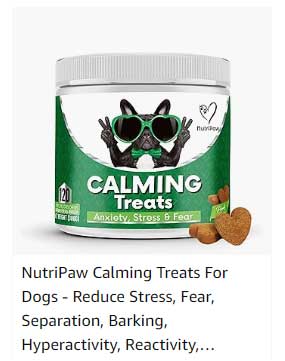Dogs, much like humans, display a wide range of behaviors that can indicate their social status and relationships with one another.
Among these behaviors, submission plays a crucial role, especially in multi-dog households.
Shared submissive behavior between two family dogs can foster a harmonious environment and help maintain a balanced social structure.
This article will delve into the reasons behind these behaviors, their significance, and how to encourage a positive dynamic between your furry friends.
What is Submissive Behavior?
Submissive behavior in dogs is characterized by actions that demonstrate a dog’s recognition of a more dominant or assertive dog.
It is not a sign of weakness but rather serves to maintain peace and social order within a group.
Typical signs of submissive behavior include:
- Lowering the body or crouching
- Avoiding direct eye contact
- Rolling over to show the belly
- Tail tucking or low wagging
- Whining or whimpering
In multi-dog households, these behaviors can often be shared or mirrored, indicating an understanding or acceptance of the established social hierarchy.
Why Shared Submissive Behavior Occurs
1. Pack Mentality:
Dogs are inherently pack animals, and their social structures mimic that of wild canines.
When two dogs live together, they may intuitively adopt roles, including that of submissive and dominant members.
Shared submissive behavior can arise as both dogs learn from one another and adjust to their dynamic.
2. Modeling Behavior:
Dogs are observational learners.
If one dog displays submissive behavior toward another, the second dog may reciprocate those actions, creating a feedback loop.
This can often be seen in pairs of dogs who are closely bonded.
3. Stress or Anxiety:
Occasionally, shared submissive behaviors might indicate stress or anxiety, particularly if one or both dogs feel unsure in their environment or around certain stimuli.
It’s essential to differentiate between healthy social behavior and those stemming from discomfort.
Significance of Shared Submissive Behavior
Shared submissive behavior can have several benefits in a household with multiple dogs:
Conflict Resolution:
When dogs communicate through submissive behavior, they can diffuse potential conflicts before they escalate.
This behavior helps maintain harmony within the group.
Enhanced Bonding:
Dogs that engage in shared submissive behaviors often strengthen their bond.
This cooperation in social rankings can create a deeper sense of trust and friendship between them.
Healthy Hierarchy:
A clearly established yet flexible hierarchy among dogs is vital.
Submissive behaviors ensure that roles are understood, reducing the likelihood of power struggles or aggressive encounters.
Encouraging Positive Dynamics
To foster a positive environment among your dogs:
1. Monitor Interactions:
Pay attention to how your dogs interact.
Look for signs of comfort, submission, and play.
Intervene if you observe any signs of aggression or discomfort.
2. Reinforce Good Behavior:
Use positive reinforcement to reward calm and friendly interactions.
Praise them when they play cooperatively or display healthy submission to one another.
3. Provide Individual Attention:
Ensure each dog receives plenty of one-on-one attention.
This helps reduce competition for resources and attention, which can lead to stress and insecurity.
4. Create a Safe Space:
Make sure your home is a safe space for both dogs.
Provide separate areas where each dog can retreat if they feel overwhelmed.
5. Socialization:
Expose your dogs to new experiences and other dogs.
This encourages them to develop their social skills, which can positively affect their behavior at home.
Conclusion
Understanding shared submissive behavior between family dogs is key to fostering a loving and cooperative household.
By recognizing the dynamics of their relationship and promoting healthy interactions, dog owners can help create a harmonious environment where both dogs thrive.
Celebrating their unique personalities while guiding them through their social behaviors will lead to a lasting friendship and a happy home.









